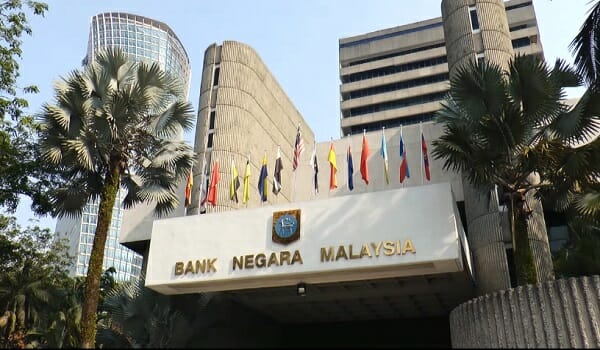Bank Negara Malaysia (BNM) International Reserves rose by US$1.5b or 1.3% MoM to US$112.9b as of 31 July 2023 due to an increase in foreign currency reserves reverting to an uptrend after three straight months of decline.
Kenanga Investment Bank (Kenanga), in a note today (Aug 8), said that the rise is sufficient to finance 5.1 months of imports of goods and services (previously retained imports) and is 1.1-time total short-term external debt.
This was primarily due to a sharp increase in foreign currency reserves where foreign currency reserves (USD1.5b or 1.3% MoM to USD100.7b): rebounded to above the USD100.0b mark due to an increase in the repatriation of export proceeds and a higher USD-converted value of other currency-based assets.
Meanwhile, special drawing rights, other reserve assets, gold, and IMF’s reserve position remained fairly unchanged.
In ringgit terms, the value of BNM reserves hit another record high of RM529.3b (+RM7.2b or 1.4% MoM) with a USD-MYR monthly average (4.591; June: 4.630) and despite the recent 25 basis points (bps) rate hike by the U.S. Fed, the ringgit managed to recoup some of its losses.
This was attributed to Fed chair Powell’s dovish remarks during th post-FOMC press conference, along with the increasing market expectations of a potential policy shift amid the unexpected downside reading in the US core CPI for June.
Nevertheless, the local note was pressured due to the widening negative yield differential between the MY-US 10-year government bonds.
Additionally, a weaker yuan resulting from China’s lacklustre macroeconomic data further added to the strain on the ringgit.
Kenanga cited regional currencies, which consists mostly of ASEAN-5 currencies appreciated against the USD, with PHP leading at 1.6%, followed by THB (1.0%), SGD (0.9%), and MYR (0.8%).
This trend emerged as the USD index (DXY) weakened to an average of 101.41 in July (June: 103.08).
However, the IDR bucked the trend, depreciating by 0.8% due to increasing market expectations of a possible dovish shift in Bank Indonesia’s stance amid its lower-than-expected inflation readings.
BNM is expected to retain status quo throughout 2024 amid easing price pressure, however, uncertainty remains
Given the persistent downward trajectory of both headline and core inflation, BNM is expected to maintain the overnight policy rate at 3.00% for the next 6 to 12 months.
However, looking ahead, the possibility of price shifts in food and commodities due to the uncertainty surrounding government policies, geopolitical risks, and weather conditions could significantly impact the inflation outlook.
Therefore, it is likely that the BNM will continue to adopt a data-dependent approach in its decision-making process.
The USD-MYR year-end forecast is presently seen at 4.29; 2022: 4.40, while the ringgit’s recent appreciation towards the 4.50/USD threshold was short-lived and it is currently hovering within the range of 4.54 – 4.57.
Kenanga uphold their neutral-to-bullish stance on the trajectory of the local note in the next three to six months due to our weak USD outlook.
The DXY is expected to trend lower around the 95.0 level in 4Q23 as Kenanga expects the Fed to turn more dovish amid continued disinflationary dynamics and potential weakening of labour market conditions in the U.S.









